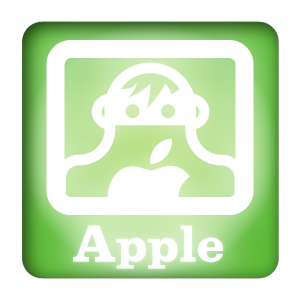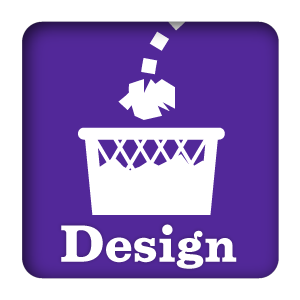Having some time to think about it, it’s time to come to grips with a new reality. With the passing of Steve Jobs, so did that generation of Apple. Now, we are into the next generation of Apple, and it’s a different experience then the one we had just three years ago. Not just a different flavor of how Apple operates, but an entirely different modus operandi.
It was inevitable, as the company’s unprecedented success has changed it’s own operating environment dramatically. The difference of between being an upstart and the biggest company in the world requires some degree of internal reorganization. By hook or by crook, everyone wants a piece of Apple now. Even with Steve at the helm, Apple would have been forced to go through a bit of a culture change as they need to protect their backside more than they ever have before.
The game Apple had been playing was over, and they had won. Somehow, that band of hippies and nerds beat every rational expectation. They not only created great products, but more importantly, people began to want these great products.
That last element can be easily overlooked. Yes, Apple did a hell of a lot that was right in every aspect of it’s business fundamentals, and it can be easily taken for granted. As they built a stronger financial foundation for the company, they resurrected the desktop computer business with the iMac, they created the best OS in the business with OS X, they created the best music player ever made in the iPod, followed that up with the ‘insanely great’ iPhone, and then topped it all off with the iPad to change the entire notion of what using a computer was all about. However, one could argue they were already making a great computer even in their worst days in the mid-nineties. The trick of the new Apple was that people started buying.
Somewhere after the iMac was introduced at a reasonable price, the resistance to the Apple price tag started to melt away. The products became so compelling that money was no longer the obstacle it usually is for consumers. People were compelled to at least think about Apple products, where it had been so easy to dismiss them before. In America, cheap usually wins in all categories, but Apple was able to chip away at that notion and make great products that made price less important.
Year after year, the “Apple Brand” became more and more prestigious. It built on its’ reputation by delivering unfailingly great products that attracted people’s attention. Soon, the illuminated Apple logo was a status symbol amongst students, commuters and coffee shop patrons as they proudly displayed their MacBooks. Then the iPhone made at the sort of technological leap that civilization hadn’t seen in decades, and it became a must-have item. Now, after the mega-hit portable devices like the iPod and the iPhone, where you showed it off like a piece of jewelry, the logo has come to be a status brand like no other.
Meanwhile, on Present-Day Earth
So at the Flint Center Apple Watch unveiling, Apple started to spend some of that banked goodwill and dilute their brand a little. Most of all, they changed what Apple is. The Apple Watch is a product that is positioned not on technology, customer demand or innovation, but on the prestige of the Apple brand and the reputation of Apple’s quality. We know less about it than any previously announced Apple product in the company’s history. For the first time since Apple marketed Apple-adorned clothes, the main selling point of the Apple Watch is Apple itself, and the trust the public has in the company.
That’s not to say the Apple Watch is not an achievement in several areas. It is a step forward in both the “Fitness Band” category and in the “Smart Watch” category, ahead of everyone else. What it does not do is make a compelling use-case scenario that will make it a product for the masses.
Even at this late date, there is little information to go as to what the watch will do. We do know that it is focused around fitness and health features, as well as messaging. We know it’s being designed to compete with high-end watches. We know it has health sensors, movement sensors, new methods of input, wireless capabilities, and on-board storage for music and podcasts. It will keep accurate time. We know that Apple is making a big push for the device by re-thinking their stores and marketing. We know the entry-level will start at $349.
It is only speculative that the watch can do “so much more” than what has been listed. So if we eliminate the speculation, what we have is a lukewarm, tepid product. If you do not have any interest in spending more than you spent on the required tethered iPhone for a wrist-mounted accessory, or you’re just not into a device that is limited to the niche markets of health and messaging, or if you just aren’t really into watches, it’s not the product for you. That’s a lot of people.
Operating it looks clumsy and awkward, involving tapping the screen, scrolling the screen, “force-tapping,” turning the crown, tapping the crown, or pushing a button. In the Flint Center demo, a user navigates the icon-only home screen by scrolling with a finger on the screen, moving their fingers to the crown to zoom in and out, and then putting a finger back on the screen to tap on the desired app. That’s quite a bit of maneuvering for launching an app, in contrast to the simplicity of the one-finger scroll-and-tap of iOS and even the iPod’s one-thumb clickwheel scroll and tap method. The watch also requires the use of two hands, one to hold and the other to operate, which is more than the iPhone requires. That will be clumsy in several situations.
Trying to provide a rich application interface on such a small screen is not going to work in most cases. Entering text isn’t even possible, nor should it be, but voice input is supposed to be part of it’s features. Talking to your watch is not going to be very easy, though. Socially, it will look weird, and practically, you have to be in a reasonably quiet area to talk in. Otherwise, you might have to be even in the more socially dicey situation of yelling at your watch. How one might edit a mis-interpreted voice input remains to be seen.
The messaging functions, make it behave more like a remote control for the iPhone. All it really does is eliminate the “need” to reach into a pocket or purse and glance at the screen. Making a use case for the convenience of not having to check your iPhone, an easy task, is going to be a challenge. From the perspective of this user, I like having the messages stay on my phone where I can look at them when I feel the need to. Having them pop up on my wrist does not make my life any easier, in fact I think it makes life less easy to have an instrument for interference on my wrist.
A watch – any watch – is a device designed to nag you. Although there have been dozens of generations that have lived comfortably with watches, a device that’s been practically omnipresent over the past three hundred years, a watch is a nuisance.
Without a watch, you can sleep in all morning. You can enjoy a long out-of-the-way trip. You can sit and ponder. With a watch, it reminds you that you have to be somewhere, do something and finish tasks. It is a tether between the natural and the technological, between you and civilization.
When viewing the “fitness” video for the Apple Watch, it’s worth noting that it extolled the virtues of being reminded when you need to stand, if the watch decides you’ve been sitting too long. The Apple Watch is taking nagging to a new extreme.
I am quite comfortable keeping technology beyond arm’s length, in the literal sense. I don’t have notifications popping up on my wrist every few seconds or minutes, tempting me to look at them as they arrive. I like it that I need to bring out my phone and voluntarily check on any accumulated messages when I have the opportunity to do so.
When I’m with people, I’m not constantly glancing at my phone to check things. It’s courtesy. If I had a watch, would I be able to stop myself from flicking my wrist and glancing at the watch whenever it buzzed me? How pissed off would people be with me if I did that? Do you get annoyed when someone checks the time as they’re having a conversation with you? You bet your sweet bippy you do. With a watch that’s buzzing you with tweets, texts and emails, does that make it worse? Yes, it really, really would.
With the Apple Watch, we essentially have the world’s most distracting and nagging device ever invented bound to our person. Such devices may be purchased with the best of intentions, but there is a human tendency to discard and ignore devices which nag after a period of time, especially ones that deal with fitness. Ignored treadmills, long-unused gym memberships and forgotten New Years resolutions lay testament to this aspect of modern life.
The Apple Watch will make for a poor traveling device with the need to carry along a separate charger for a daily recharge regimen. Carrying a charger for the phone, the computer and the watch is asking the user to embrace a complicated setup.
Operating the Apple Watch will involve wearing it on the non-dominant wrist so your dominant hand can operate it. Luxury watches with a winding mechanism are usually built that way, but users of battery operated watches had a choice before now. The level of interaction with the Apple Watch will compel the user to put it on the weaker hand. Not a deal-breaker by any means, but one most people haven’t given a lot of thought to. It will also be interesting to see if the sensors will work for those who wear a watch with the face on the palm-side of the wrist.
So Why Do This?
Apple isn’t blind to these shortcomings. Tim Cook even talked about the limits of a watch product extensively at one point, openly questioning the need for a wrist-mounted device. So one has to figure that their priority with the Apple Watch isn’t to push a new product out that will take over the world, their objective is to push the value of the Apple brand upscale and enter into markets they believe will expand Apple’s appeal. The product is tailor-made for the affluent consumer, and specifically the upscale East Asian consumer. Gold-colored products are mammoth sellers for Apple in East Asia, where proclaiming status through expensive material goods is socially important, and selling a genuine gold product in the top-of-the-line Apple Watch “Edition” will net the company a nice profit.
However, with conservative analysis of how the Apple Watch will fare as a mainstream product, the prospects for a larger success are not bright. The Apple Watch is technologically chained to the iPhone, so loyal fans and users of competing tech brands will not be using the watch. That limits the potential base of users to the existing customer base. Of the customer base, those that will be inclined to add an Apple Watch will likely be much less than half. In one small-sample poll, Apple watch interest from existing Apple customers was at 11%. That kind of poll is clearly not an accurate way of gauging true customer interest, but it does reflect that interest is mild at best.
The buyer for the Apple Watch does not follow the usual consumer profile Apple usually goes after. In the last fifteen years, Apple has targeted their products after younger users. Bright colors and stylish design were the hallmarks of Apple products. The Apple Watch goes very much the other way with a product that appeals to older buyers. This is not the product the kids will be taking to school to show off to their friends. The impression I get is that the Apple Watch is fundamentally an homage to your Dad’s watch.
Whittling down the potential user base is not Apple’s usual way of thinking, but the Apple Watch is not Apple’s usual product.
It’s also interesting to see Apple gradually but assuredly adapt to being a Chinese-focused company. At least in terms of this product, they are now thinking of the needs and wants of the Chinese consumer first, and the Apple Watch is aiming straight at that customer. It’s not a Christmas target that Apple had with Apple Watch, but the Chinese New Year, the biggest Chinese buying season. Although current information hints that the product may not launch until April and as late as June, missing it’s original release target.
Does Apple regard the Chinese market as being a better consumer market for their products? It’s an interesting question, and I’m sure Apple executives would protest that statement, but their actions do show more interest in mining lucrative China over pursuing lower-margin products in other markets.
So that’s what the new Apple is. A company that has begun to move on from its traditional markets and its traditional sense of what makes a great product. That’s just what we have to deal with now.
The Watch Itself
I have not had the opportunity to operate a functional Apple Watch as of yet, but as of this writing, neither has more than a few hundred people, and most of them are badged Apple employees. What I have to go on is what I’ve seen and read through Apple’s Flint Center event and web site.
The Apple Watch is being marketed as a “tiny computer” on the wrist, capable of monitoring health input from sensors on the back of watch, as well as a messaging device that can handle incoming and outgoing text and voice. However, most of the features we’ve been told about seem to off-load most of the processing on the tethered iPhone, and the SDK for 3rd party apps works almost exclusively in this way.
It has a square face and dark front, reminiscent of Pulsar brand LED watches from the early 70’s. The body is a rounded rectangle, in classic Apple form, but bulges out considerably at the back where four sensors monitor your body.
It will likely be manufactured in China, as Apple has not admitted to any other manufacturing sites, and is not known to be involved in any other watch-capable manufacturing facilities. How the public will react to non-Swiss timepieces is a bit of a wildcard.
The Apple Watch will come in at least 33 different variations, with 12 varieties of watch bodies:
(Apple uses “38mm” to denote the ladies’ size and “42mm” to denote the mens’ size.)
“Sport” Versions
(The crowns do not have an accent color)
- Mens’/Ladies’ Silver Aluminum w/White Sport Band & Silver Accents
- Mens’/Ladies’ Silver Aluminum w/Blue Sport Band & Silver Accents
- Mens’/Ladies’ Silver Aluminum w/Green Sport Band & Silver Accents
- Mens’/Ladies’ Silver Aluminum w/Pink Sport Band & Silver Accents
- Mens’/Ladies’ Space Grey Aluminum w/Black Sport Band & Space Grey Accents
“Watch” Versions
(All crowns have a black accent)
- Mens’/Ladies’ Stainless Steel w/White Sport Band & Silver Accents
- Mens’/Ladies’ Stainless Steel w/Black Sport Band & Silver Accents
- Mens’/Ladies’ Stainless Steel w/Black Classic Buckle & Stainless Steel Accents
- Mens’/Ladies’ Stainless Steel w/Milanese Loop & Stainless Steel Accents
- Ladies’ Stainless Steel w/Soft Pink Modern Buckle & Stainless Steel Accents
- Ladies’ Stainless Steel w/Brown Modern Buckle & Stainless Steel Accents
- Ladies’ Stainless Steel w/Midnight Blue Modern Buckle & Stainless Steel Accents
- Mens’ Stainless Steel w/Stone Leather Loop (Pebbled leather? iOS skeuomorphism comes to life!) & Stainless Steel Accents
- Mens’ Stainless Steel w/Bright Blue Leather Loop & Stainless Steel Accents
- Mens’ Stainless Steel w/Light Brown Leather Loop & Stainless Steel Accents
- Mens’/Ladies’ Stainless Steel w/Steel Link Bracelet
- Mens’/Ladies’ Space Black Stainless Steel w/Black Steel Link Bracelet
“Edition” Versions
- Ladies’ 18K Yellow Gold & Bright Red Crown Accent w/Bright Red Modern Buckle & Yellow Gold Accents
- Mens’/Ladies’ 18K Rose Gold & White Crown Accent w/White Sport Band & Rose Gold Accents
- Ladies’ 18K Rose Gold & Black Crown Accent w/Rose Grey Modern Buckle & Rose Gold Accents
- Mens’ 18K Yellow Gold & Black Crown Accent w/Black Sport Band & Yellow Gold Accents
- Mens’ 18K Yellow Gold & Midnight Blue Crown Accent w/Midnight Blue Classic Buckle & Yellow Gold Accents
I expect all editions will be sold as watch-and-band packages, and then the individual bands will be sold separately. I also have yet to see any evidence you can fit the higher-end Edition bands on the lower-end watches. Many of the bands have a metal base that matches the case. So could you take a gold band and stick it on an aluminum body? That doesn’t sound like something Apple would want. It’s quite possible that the bands for the higher-end watches may be removable, but not exchangeable. The band you get with the watch stays with it. The interchangeable bands may only be a feature of the “Watch” and “Sport” models.
As for cost, the numbers floating around vary pretty wildly on the high-end. But we know they start at $349, and I assume this is the “Sport” version. The “Watch” versions I think will be between $1200 and $2000. Various bands will make the whole package cost more. The “Edition” version will be between $7,000 and $12,000. That’s a huge bit of leeway, but the value of jewelry can be highly subjective. I base the numbers on what the highest-end sport watches are sold for in US stores, the US prices for high-end stainless steel watches and the Chinese market prices for name brand luxury 18K gold watches.
Also, since no one has mentioned it, Apple will also introduce a bluetooth headphone set of some sort. Maybe it will be co-branded with Beats, maybe they leave it up to Beats entirely. I still think Johnny Ive would want a crack at making bluetooth headphones of his own design to go with the Apple Watch and the subsequent iPhones & iPods in the future that will likely be missing the headphone jack.
A Prediction of Failure?
The Apple Watch has a lot of things that people are going to like. It’s gorgeous, it’s ultra-useful to some customers and it is no doubt going to be very well made. So here’s a forecast for the lifespan of this product. Initially, it will sell well. Very well. Apple has the kind of marketing power and customer loyalty that ensures the introduction of any new Apple product will be a success.
Over the long term though, the product will need a boost. As it is today, the Watch is a device with hard limits for the size of the consumer base and a real ceiling in terms of usefulness. Like many attempts to use fitness equipment, it will start with high hopes, but without something to sustain the initial surge of interest, the product will be left behind. Like the treadmill in the corner of a bedroom that just serves as a clothes rack, the Apple Watch may meet it’s end at the back of a dresser drawer, forgotten and neglected, the user happy to let go of the ever-present kibitzing.
However, it’s also easy to see that Apple may have more in store for this type of device. What can Apple do to put this type of screen and interface in the hands of kids, college students and non-watch fans? They know that this is a larger market that what the Apple Watch is going to give them. Do they have a second act for this micro-screen device? I assume they do, and that’s the device I – and most people – will be more interested in.
I will admit that in some corner of my mind, I actually want this product to fail. At my most skeptical, I see it as a bit of hubris on the part of the upper management of the company, a designer’s fancy for Johnny Ive and a dream product for fitness-nut Tim Cook. I think they’ve overlooked the larger market to make a vanity product. I’m fearful that they might shred parts of Apple, like the retail stores, and delay teams of engineers from making much-needed fixes to existing software issues, to make this product a success. So I want Apple to learn a lesson from the Apple Watch, because you learn more from mistakes than you learn from success, and I want them to learn faster. It is the first major Apple product in their 38 year history I do not want, and that alarms and distresses me.










